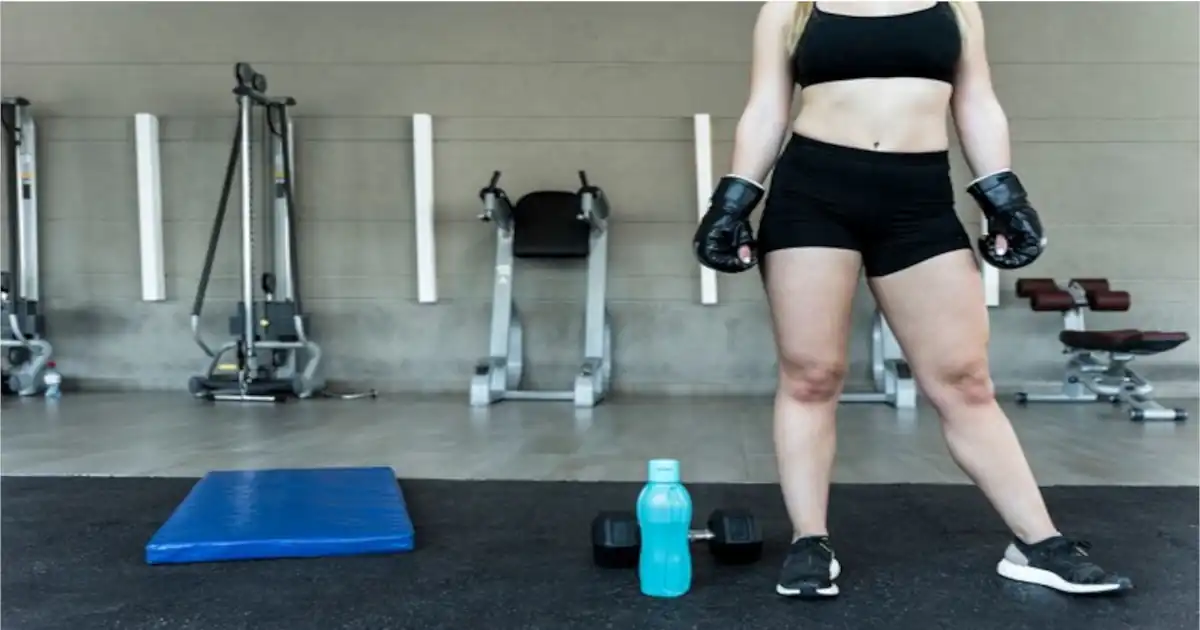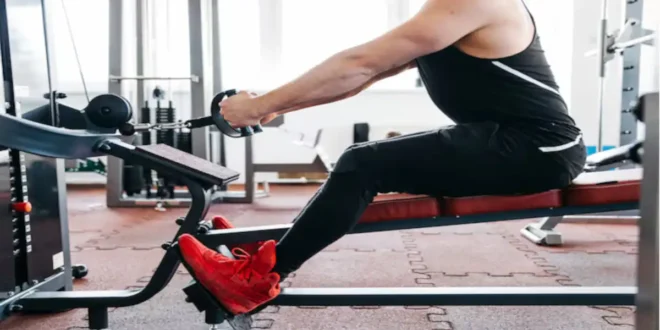The Ultimate Guide to Gym Equipment for Glutes
Developing strong, toned glutes isn’t just about aesthetics; it’s crucial for improving posture, preventing injury, and enhancing overall athletic performance. If you’re serious about glute development, using the right gym equipment is key to targeting the muscles effectively. This guide will walk you through the best gym equipment for glutes, helping you maximize your workouts and achieve your fitness goals.
1. Understanding Glute Anatomy
Before diving into the equipment, it’s essential to understand the muscles you’re targeting. The glutes consist of three primary muscles:
- Gluteus Maximus: The largest muscle in your body, responsible for hip extension, external rotation, and the overall shape of your backside.
- Gluteus Medius: Located on the upper side of your hip, it helps stabilize your pelvis and is crucial for abduction (moving your leg away from your body).
- Gluteus Minimus: The smallest glute muscle, found underneath the gluteus medius, assisting in hip stabilization and internal rotation.
Each of these muscles can be targeted using specific gym equipment, ensuring well-rounded glute development.
2. Benefits of Strong Glutes
Before discussing equipment, it’s important to highlight why building strong glutes is essential:
- Improved Posture: Strong glutes stabilize your pelvis, which helps maintain proper spinal alignment.
- Enhanced Athletic Performance: Powerful glutes improve performance in sports like running, jumping, and lifting.
- Injury Prevention: Strengthening your glutes reduces the risk of lower back pain, knee injuries, and hip strain.
- Functional Movement: Everyday activities, like walking, climbing stairs, and lifting, become easier with strong glutes.
3. Best Gym Equipment for Glutes
When it comes to targeting the glutes, some gym machines and free weights are particularly effective. Let’s explore each type of equipment:
A. Smith Machine
The Smith Machine is an excellent tool for performing controlled and safe glute exercises. It allows you to squat or lunge without worrying about balance, ensuring a focus on form and muscle engagement.
- Best Exercise: Smith Machine Squat
- How to Do It: Place the barbell across your shoulders, standing with feet slightly wider than shoulder-width apart. Lower yourself into a squat, keeping your back straight and your knees in line with your toes. Push through your heels to return to the starting position.
- Glute Activation: The controlled range of motion emphasizes the gluteus maximus, especially when you squat deep.
B. Leg Press Machine
The Leg Press Machine is one of the best machines for building the glutes, quads, and hamstrings simultaneously. By adjusting your foot placement, you can emphasize your glutes more effectively.
- Best Exercise: Leg Press with High Foot Placement
- How to Do It: Sit in the leg press machine and place your feet higher on the platform. Push through your heels to extend your legs without locking your knees, then lower them back to a 90-degree angle.
- Glute Activation: A higher foot placement shifts the focus from the quads to the glutes and hamstrings.
C. Barbell
One of the most versatile pieces of gym equipment, the Barbell allows for heavy resistance training, which is crucial for glute growth. Two exercises particularly stand out for glute activation:

Best Exercise: Barbell Hip Thrust
-
- How to Do It: Sit on the ground with your upper back against a bench, and place a barbell across your hips. Drive through your heels to lift your hips, squeezing your glutes at the top. Lower slowly and repeat.
- Glute Activation: This exercise maximally activates the gluteus maximus and is one of the most effective movements for glute development.
- Best Exercise: Barbell Deadlift
- How to Do It: Stand with your feet hip-width apart, grip the barbell, and keep your back straight as you hinge at the hips to lift the bar off the ground. Squeeze your glutes at the top of the movement.
- Glute Activation: Deadlifts target the entire posterior chain, including the glutes, hamstrings, and lower back.
D. Cable Machine
The Cable Machine provides constant tension throughout the range of motion, making it ideal for isolation exercises. It’s versatile and allows for a variety of exercises that target different parts of the glutes.
- Best Exercise: Cable Kickback
- How to Do It: Attach an ankle strap to the cable machine and secure it around your ankle. Stand facing the machine, and kick your leg back while keeping your knee slightly bent. Squeeze your glutes at the top of the movement.
- Glute Activation: Cable kickbacks isolate the gluteus maximus, providing a deep burn and ensuring full muscle activation.
E. Glute Ham Developer (GHD)
The Glute Ham Developer is designed specifically to target the glutes and hamstrings. It’s an excellent machine for strengthening the posterior chain and improving hip extension.
- Best Exercise: Glute Ham Raise
- How to Do It: Position yourself on the GHD, with your thighs on the pads and feet secured. Lower your body until your torso is parallel to the floor, then raise yourself back up by contracting your glutes and hamstrings.
- Glute Activation: This exercise heavily targets the gluteus maximus and hamstrings, improving both strength and endurance.
F. Kettlebells
Kettlebells are versatile and provide a unique way to target the glutes while also improving cardiovascular fitness and stability.
- Best Exercise: Kettlebell Swing
- How to Do It: Stand with feet shoulder-width apart, holding the kettlebell with both hands. Hinge at the hips, swing the kettlebell between your legs, and use your hips to thrust it forward to chest height. Repeat in a fluid motion.
- Glute Activation: The explosive hip thrust in kettlebell swings primarily targets the glutes and hamstrings.
G. Resistance Bands
Though simple, Resistance Bands are incredibly effective for targeting the glutes, especially for isolation exercises and warming up before heavier lifts.
- Best Exercise: Banded Side Walks
- How to Do It: Place a resistance band just above your knees. Bend your knees slightly and take small lateral steps, keeping tension on the band throughout the movement.
- Glute Activation: This exercise primarily targets the gluteus medius and minimus, helping to round out the glutes.
4. Incorporating Glute Equipment into Your Workout Routine
Now that you know the best equipment, it’s essential to integrate them into a well-rounded glute-focused workout. Here’s a sample workout plan:
- Warm-Up:
- 10 minutes of light cardio (treadmill or elliptical)
- Resistance Band Side Walks (3 sets of 20 steps)
- Workout:
- Barbell Hip Thrust: 4 sets of 10 reps
- Leg Press (High Foot Placement): 3 sets of 12 reps
- Smith Machine Squats: 4 sets of 10 reps
- Cable Kickbacks: 3 sets of 15 reps per leg
- Kettlebell Swings: 3 sets of 20 reps
- Cool Down:
- Stretching and foam rolling to aid recovery.
5. Common Mistakes to Avoid
When training the glutes, there are a few common mistakes that can hinder your progress:
- Not Using Full Range of Motion: Ensure you’re lowering deep enough in squats or fully extending in hip thrusts to engage the glutes.
- Relying Too Much on the Quads: Focus on pushing through your heels to ensure glute activation, rather than relying on your quads.
- Neglecting Variety: Incorporate different types of equipment and exercises to target all areas of the glutes.
6. Conclusion
Building strong glutes requires consistency, effort, and the right equipment. By incorporating machines like the Smith machine, leg press, and cable machine, alongside free weights and resistance bands, you can effectively target all three gluteal muscles for balanced development. Remember to focus on form, avoid common mistakes, and integrate a variety of exercises to maximize your glute growth. With the right tools and workout plan, you’ll be on your way to achieving a stronger, more defined backside in no time.
Frequently Asked Questions (FAQs)
What is the best gym equipment for targeting glutes?
The best equipment for glute development includes the barbell (for hip thrusts and deadlifts), the leg press machine (with a high foot placement), and the Smith machine. These pieces of equipment allow for heavier resistance and deep glute engagement during workouts.
How often should I train my glutes?
It’s recommended to train your glutes two to three times a week, allowing at least 48 hours between sessions for recovery. This frequency ensures proper muscle growth without overtraining.
Can I build glutes without heavy weights?
Yes, you can build glutes using bodyweight exercises or lighter equipment such as resistance bands and kettlebells. However, for maximum growth and strength, gradually increasing resistance through heavier weights will be more effective.
Are machines better than free weights for glute exercises?
Both machines and free weights have their advantages. Machines like the leg press offer stability and isolation, while free weights, such as barbells, provide a greater range of motion and engage stabilizing muscles, leading to more well-rounded glute development.
Do I need to use specific equipment to target the gluteus medius and minimus?
Yes, exercises like banded side walks, cable kickbacks, and leg abductions are great for targeting the gluteus medius and minimus. These smaller glute muscles help with stability and give the glutes a fuller, rounded shape.
How can I prevent injury when training my glutes?
To prevent injury, always focus on proper form and avoid lifting too heavy too soon. Include a thorough warm-up, engage your core during exercises, and gradually increase resistance as your glutes become stronger.
READ ALSO: Hyperpigmentation: Causes, Treatment, and Prevention
 Touch Blog
Touch Blog



